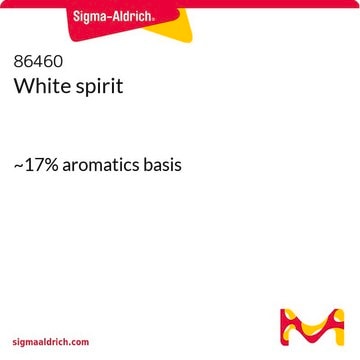31277
Cobalt(II) chloride hexahydrate
puriss. p.a., ACS reagent, reag. Ph. Eur., 98-102%
Synonym(s):
Cobaltous chloride hexahydrate
About This Item
Recommended Products
grade
ACS reagent
puriss. p.a.
Agency
reag. Ph. Eur.
vapor pressure
40 mmHg ( 0 °C)
Assay
98-102%
form
solid
impurities
≤0.01% water-insoluble matter
anion traces
nitrate (NO3-): ≤100 mg/kg
sulfate (SO42-): ≤50 mg/kg
cation traces
Ca: ≤50 mg/kg
Cu: ≤20 mg/kg
Fe: ≤50 mg/kg
K: ≤50 mg/kg
Mg: ≤10 mg/kg
Mn: ≤50 mg/kg
Na: ≤100 mg/kg
Ni: ≤500 mg/kg
Pb: ≤5 mg/kg
Zn: ≤25 mg/kg
SMILES string
O.O.O.O.O.O.Cl[Co]Cl
InChI
1S/2ClH.Co.6H2O/h2*1H;;6*1H2/q;;+2;;;;;;/p-2
InChI key
GFHNAMRJFCEERV-UHFFFAOYSA-L
Looking for similar products? Visit Product Comparison Guide
General description
Application
- To convert various aldoximes into corresponding nitriles in the presence of an inorganic base.
- To prepare organic-inorganic polyvinylidene fluoride nanofiber composites (PVDF/CoCl2) for the production of pure hydrogen production from NaBH4.
It can also be used as a cobalt precursor to synthesize nickel-cobalt-based binary metal phosphide (NiCoP) hollow spheres, which are used for electrocatalysis and energy storage (supercapacitor) applications.
Signal Word
Danger
Hazard Statements
Precautionary Statements
Hazard Classifications
Acute Tox. 4 Oral - Aquatic Acute 1 - Aquatic Chronic 1 - Carc. 1B Inhalation - Eye Dam. 1 - Muta. 2 - Repr. 1B - Resp. Sens. 1 - Skin Sens. 1
Storage Class Code
6.1D - Non-combustible acute toxic Cat.3 / toxic hazardous materials or hazardous materials causing chronic effects
WGK
WGK 3
Flash Point(F)
Not applicable
Flash Point(C)
Not applicable
Certificates of Analysis (COA)
Search for Certificates of Analysis (COA) by entering the products Lot/Batch Number. Lot and Batch Numbers can be found on a product’s label following the words ‘Lot’ or ‘Batch’.
Already Own This Product?
Find documentation for the products that you have recently purchased in the Document Library.
Customers Also Viewed
Our team of scientists has experience in all areas of research including Life Science, Material Science, Chemical Synthesis, Chromatography, Analytical and many others.
Contact Technical Service









